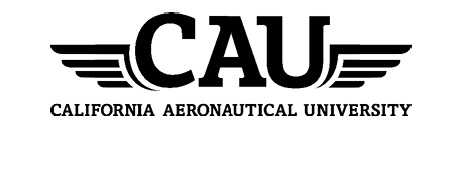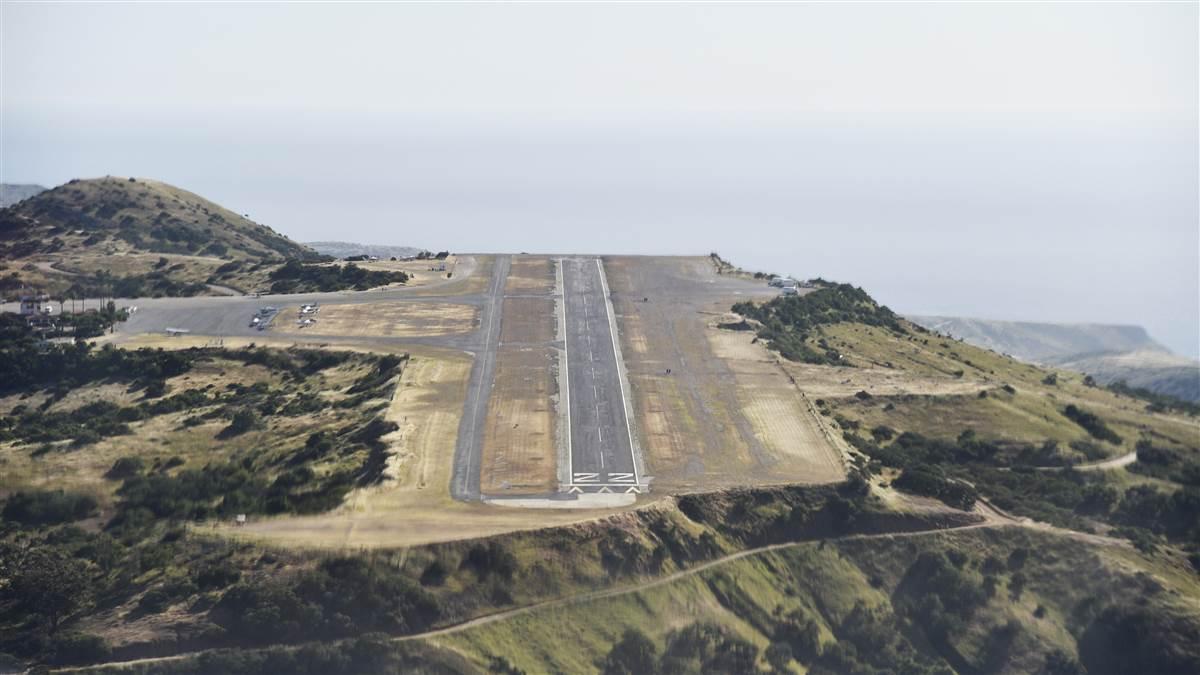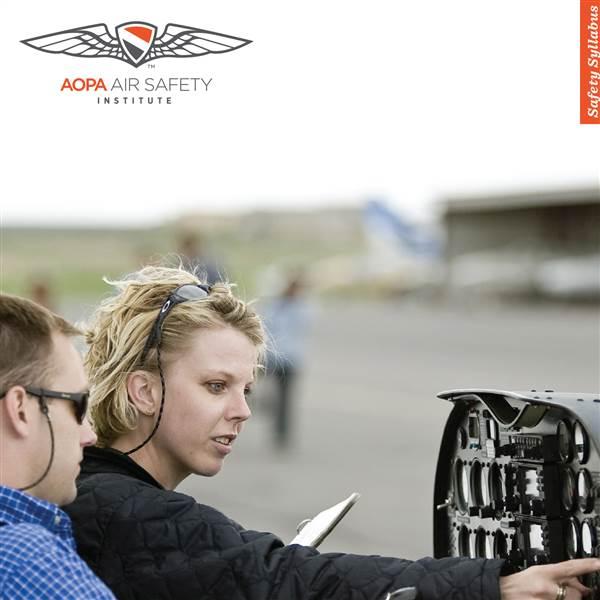

Camarillo draws a crowd
People, airplanes, exhibitors land in Southern California
By Thomas A. Horne
Nearly 5,000 visitors and 426 airplanes converged on California’s Camarillo Airport in April to kick off this year’s round of AOPA Fly-Ins. The crowd arrived to find 68 exhibitors and two full days of activities, camaraderie, and just plain fun. AOPA’s Camarillo Fly-In, presented by California Aeronautical University and hosted by Channel Islands Aviation, was AOPA’s seventeenth regional fly-in in four years, and total all-time attendance hit 49,000.
New for this year was a two-day schedule that included a series of Friday workshops. These interactive, hands-on sessions included discussions and demonstrations dealing with owner-guided maintenance, mountain flying, ocean flying, getting back into IFR flying, and a “Pilot Plus One” program aimed at activities designed to appeal to nonflying spouses and partners. AOPA’s popular Rusty Pilots seminar was also held both days.
Clear skies and ideal temperatures prevailed over the two days, with occasionally strong Santa Ana winds being the only weather glitch. But campers and exhibit airplanes alike descended on Camarillo. Joe Davis, who cruised 2,229 nautical miles from his home base at Chester, Connecticut (SNC), in his 1970 Cessna Cardinal, won a Stratus 2S ADS-B receiver for being the pilot who ventured the farthest.
As usual at AOPA’s fly-ins, there were exhibit airplanes aplenty—58, to be precise. Thanks to a wing of the Commemorative Air Force being based at Camarillo, its staff put a Grumman F6F Hellcat, a Mitchell B–25J, an Aero Vodochody L–29, and a rare Mark XIV Supermarine Spitfire on display. Also featured were the latest from general aviation manufacturers, including the new TBM 930 from Avex Inc.’s TBM service center, located at Camarillo.
There was even a vintage Cirrus VK-30 kitplane—in the Sellers Corral, a venue where private sellers could put airplanes up for sale.
Next stop on the fly-in trail: Norman, Oklahoma (OUN), on September 8 and 9, where we’re all hoping to meet up again. See you there!
Email [email protected]
Spectacular Cessna Pilots Society’s Fly-Out Caps Weekend
 Pilots joined up and headed out to rugged, remote Catalina Island off California’s coast to cap off their AOPA Fly-In weekend. Navion pilot Pat Mullen summed up the experience as “the perfect way to put an exclamation mark on the AOPA Fly-In to Camarillo.” The fly-out was organized by the Cessna Pilots Society and led by Mike Jesch, a Cessna 182 owner. Many of the participating pilots had attended the Friday AOPA workshop on ocean and mountain flying techniques. The trip featured the 26-mile overwater hop to the island, landing on the windswept 1,602-foot-elevation Airport in the Sky, camping, and camaraderie.
Pilots joined up and headed out to rugged, remote Catalina Island off California’s coast to cap off their AOPA Fly-In weekend. Navion pilot Pat Mullen summed up the experience as “the perfect way to put an exclamation mark on the AOPA Fly-In to Camarillo.” The fly-out was organized by the Cessna Pilots Society and led by Mike Jesch, a Cessna 182 owner. Many of the participating pilots had attended the Friday AOPA workshop on ocean and mountain flying techniques. The trip featured the 26-mile overwater hop to the island, landing on the windswept 1,602-foot-elevation Airport in the Sky, camping, and camaraderie.
“After camping last night, hiking this morning, and experiencing the camaraderie between pilots, you can’t ask for anything more,” added Mullen.
The Cessna Pilots Society will organize fly-outs at upcoming AOPA Fly-Ins this fall (www.cessna-pilots.net). —David Tulis
BasicMed is here
A new era for general aviation
By Gary Crump
We are now well into the implementation of BasicMed, the FAA’s alternative pathway to medical certification for noncommercial flying. AOPA’s Pilot Information Center has been very busy since January, when the FAA announced the publication of the final rule; since May 1, when FAR Part 68 became effective, the phones have been ringing nonstop.
With that level of activity and interest from pilots, a few areas of the BasicMed process have generated some questions.
One misunderstanding that persists is that the third class medical has been replaced by BasicMed. That is not the case. The third class medical is alive and well and remains an option for pilots who fly aircraft or flight operations that fall outside the BasicMed requirements or who prefer to continue to obtain a third class medical through an aviation medical examiner.
Pilots who currently hold an FAA medical certificate under FAR Part 67 may also be qualified under BasicMed. The caveat is that the entire duration of the flight must be conducted under either the BasicMed rules or the rules of the medical certificate; you can’t change your mind mid-flight and switch from one operation to another.
Another question concerns special issuance requirements. BasicMed identifies nine medical conditions in three “organ system” categories that require an FAA special issuance authorization to be issued only once. If your most recent medical was issued under an authorization for any of those nine conditions and the condition remains stable such that you can medically self-assess your ability to operate safely, you are golden. If, after you have qualified under BasicMed, you then develop one or more of those nine conditions, you can no longer operate under BasicMed until you have applied for a medical certificate, and have been granted a special issuance authorization.
There are four steps to meeting the legal paperwork requirements once you determine that you are eligible for BasicMed. The first step is to download the Comprehensive Medical Examination Checklist with the FAA Form number 8700-2, and fill out the “individual information” section. The second step is to take the checklist to any state-licensed physician, who will complete the physical examination following the checklist and then sign it. You keep the completed checklist with your logbook or store it electronically.
Once you have completed the exam and obtain the physician’s information, the third step is to complete the medical self-assessment course and pass the quiz. After the quiz, you complete a form to be transmitted to the FAA that includes some basic personal information about you and the physician who performed your exam such as name, address, and telephone number. The only information you must provide about the exam is the physician’s identifying information and the date the exam was performed. Once that is done, the fourth and final step is to print the course completion certificate and keep it with your logbook or store it electronically.
AOPA’s Pilot Information Center staff can help. Give us a call at 800-872-2672 or email.
Gary Crump is director of the AOPAPilot Information Center medical certification department.
Ask Jim
Jumping out of a perfectly good airplane
Am I covered for that?
Q: Do you offer liability insurance for a pilot flying skydivers?
A: Skydiving is one of the most exciting and thrilling activities that involves general aviation. One way some commercial pilots build their hours is to fly a “jump” airplane. Just think of how many takeoffs and landings a busy jump school could get on a nice day! But I hope pilots consider how to protect themselves in the event of an injury or accident. Jumpers sometimes get hurt, so how can a contract jump pilot protect himself? Quite frankly, there aren’t many options, but there is one that I recommend. Since the jump school—hopefully—has coverage, the pilot should request to be added to the school’s insurance policy as an “additional insured.” This extends the school’s policy coverage to the pilot. There typically is an additional charge for this service, and the amount will vary depending upon the pilot’s qualifications. And here’s another recommendation: Ask to see the policy. You might be surprised to find the school has decent coverage for jump operations—or have an eye-opening moment and find that it doesn’t have any jump coverage at all.
Jim Pinegar is vice president of the AOPA Aviation Insurance Co. and owns a Cessna 172.
AOPA Air Safety Institute: ASI News
‘Pinch Hitter’ course and syllabus are free
Tips your nonpilot cockpit companion will appreciate
By Machteld Smith
 To know and understand something is to become more comfortable with it.
To know and understand something is to become more comfortable with it.
In the early 1960s, AOPA developed the Pinch Hitter™ course to do just that. Nonpilots learned to navigate to an airport, talk with air traffic control, and land an airplane safely—all on their own. Now in its fifty-fourth year, the course is famous for successfully helping nonpilot companions become more comfortable in the cockpit and even participate as an effective crewmember while enjoying their flying adventure.
One of the objectives, then and now, has been to avoid complex theories. Instead, simple terms explain aerodynamics concepts. The course introduces the principles of flight and provides an overview of flight instruments and radio communication. Participants also learn what to do in the unlikely event of pilot incapacitation and how to bring the airplane to a safe landing.
In addition, the AOPA Air Safety Institute recently developed the Pinch Hitter syllabus to guide nonpilot companions, flight instructors, and experienced pilots through Pinch Hitter training. The 14-page booklet expands the knowledge participants have gained from the course. It suggests ground and flight lessons covering aircraft orientation and scenario-based training. The latter provides hands on instruction to deal with an emergency. An in-flight guide and emergency checklist complete the syllabus.
You can access the free course and syllabus on ASI’s website. ASI recommends that your companion jots down questions or comments while taking the course. Then he or she can discuss these afterward with an instructor or experienced pilot.
The course and syllabus are not intended as a learn-to-fly training program for student pilots. Yet, it has planted the flying bug in many—some of whom have gone on for more training, even earning their private pilot certificate.
Machteld Smith, an aviation technical writer for the AOPA Air Safety Institute, took her first flight in a GA aircraft during a Pinch Hitter course in 1983.
Member Services: Tips from PIC
Instrument training tips
Instrument training can be a challenging, and ultimately rewarding experience. There are a few things I’ve found in my experience as a CFII that help keep this training moving along as easily as possible.
1. Master flying the aircraft early. Instrument training is more procedural than private pilot training, where there was a heavier focus on aircraft control. Pilots will be busier talking to ATC, programming avionics, and monitoring navigation. Struggling to keep the aircraft on altitude, airspeed, and heading will be a distraction from these additional tasks and a pilot can quickly get behind the aircraft, and frustrated, with all of this going on. Taking the time early in training to master basic attitude flying, including partial panel, and navigation techniques outside of the IFR environment will make the procedural part of instrument flying easier.
2. Master the avionics early. If possible, plug the aircraft into ground power or use training software for the avionics in the aircraft to learn the device. Knowing the button-pushing flow for loading and activating an approach, tuning communication and navigation frequencies, and changing navigation between various navigation sources will prove useful.
3. Take the time to review approaches before you fly. This applies even after you have earned your instrument rating, but can be especially helpful in training. Having an idea of what’s coming relieves some mental workload in flight.
Training for an instrument rating is a challenge. Following these tips can help smooth the process. Don’t forget to have some fun, too.
NOTICE OF ANNUAL MEETING OF MEMBERS
The annual meeting of the members of the Aircraft Owners and Pilots Association will be held at 9 a.m. on Thursday, September 7, 2017, at the headquarters of AOPA, 421 Aviation Way, Frederick, Maryland, 21701, located on the Frederick Municipal Airport (FDK), for the purpose of receiving reports and transacting such other business as may properly come before the meeting, specifically including the election of trustees. If you are not able to attend, but would like to appoint your voting proxy, please go online (www.aopa.org/myaccount) or call 800-872-2672. —Kenneth M. Mead, Secretary


